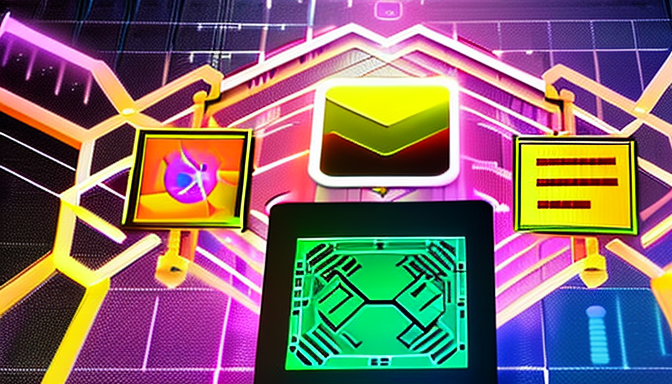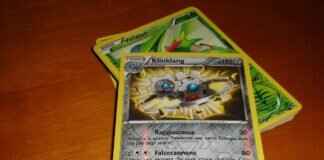The rise of fractionalized non-fungible tokens (NFTs) marks a significant shift in how we perceive and engage with digital ownership. Traditionally, owning a digital asset meant having exclusive rights to a single entity, often making high-value items inaccessible to the average consumer. However, fractionalized NFTs have emerged as a solution, enabling multiple individuals to collectively own a portion of a digital asset. This innovative approach not only democratizes access to valuable digital items but also transforms the very essence of ownership in the digital realm.
Understanding Fractionalized NFTs
Fractionalized NFTs are created by dividing a single NFT into smaller, tradable pieces. This process allows investors to buy, sell, or trade fractions of high-value assets, such as digital art or virtual real estate. For example, a digital artwork valued at $1 million can be divided into 1,000 fractions, enabling 1,000 individuals to own a share for just $1,000 each. This model promotes inclusivity and broadens the market for digital assets, allowing more people to participate in the NFT ecosystem.
The Technology Behind Fractionalization
The backbone of fractionalized NFTs is blockchain technology. Blockchain provides a secure, transparent, and immutable ledger that records ownership and transaction history. Smart contracts automate the process of buying and selling fractions, ensuring that all parties fulfill their obligations without the need for intermediaries. This technology not only enhances security but also reduces costs associated with traditional asset management.
Market Trends and Growth
The market for fractionalized NFTs is witnessing rapid growth. According to a recent report by NonFungible.com, the fractional NFT market has expanded by over 300% in the past year, driven by increased interest from both investors and collectors. This trend reflects a broader shift in how digital assets are valued and perceived, moving away from exclusive ownership to a more collaborative model.
Investment Opportunities and Risks
- Diversification: Investors can diversify their portfolios by acquiring fractions of multiple NFTs, reducing risk while gaining exposure to high-value assets.
- Market Volatility: Despite the opportunities, fractionalized NFTs are subject to market fluctuations, and investors must conduct thorough research before investing.
The Future of Digital Ownership
As fractionalized NFTs continue to gain traction, they are likely to influence future models of digital ownership. Regulatory frameworks will need to evolve to address issues of ownership rights and consumer protection. Furthermore, artists and creators stand to benefit from this model, as it opens new revenue streams and fosters collaboration within the digital economy.
Conclusion: Embracing a New Era of Ownership
The emergence of fractionalized NFTs signifies a transformative shift in digital ownership, fostering inclusivity and innovation. As the landscape evolves, stakeholders must adapt to harness the full potential of this emerging trend, paving the way for a more democratized digital asset market.
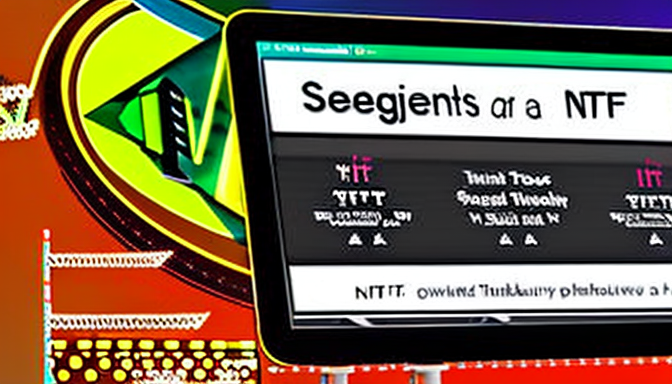
Understanding Fractionalized NFTs
has become increasingly important in the evolving landscape of digital assets. These innovative tokens enable the division of ownership of high-value non-fungible tokens, making them accessible to a broader audience. This approach not only democratizes ownership but also broadens the participation in the NFT market, allowing individuals to invest in digital assets that were previously out of reach.
Fractionalized NFTs operate on a simple principle: they allow multiple investors to own a fraction of a single NFT. For instance, consider a digital artwork valued at $1 million. By fractionalizing this asset into 1,000 tokens, each valued at $1,000, it becomes possible for numerous collectors to invest in the piece without needing to purchase it outright. This model has opened doors for both casual investors and serious collectors, creating a more inclusive marketplace.
The technology underpinning fractionalized NFTs relies heavily on blockchain systems. These decentralized networks provide a secure and transparent environment for transactions. Each fractionalized token is recorded on the blockchain, ensuring that ownership is verifiable and immutable. Smart contracts play a crucial role in this process, automating the division and transfer of ownership. They enforce terms without the need for intermediaries, thus reducing costs and enhancing trust among participants.
Research indicates that the fractional NFT market is rapidly expanding. According to a report by NonFungible.com, the market has seen a significant increase in trading volumes, reflecting a growing interest from both investors and collectors. The ability to share ownership of high-value assets is reshaping how digital assets are perceived, creating new opportunities for investment and engagement.
However, as with any emerging market, there are risks involved. Market volatility is a significant concern, as the value of fractionalized NFTs can fluctuate drastically. Additionally, regulatory uncertainties pose challenges, as the legal framework surrounding these assets is still evolving. Investors are encouraged to conduct thorough due diligence and stay informed about potential changes in regulations that could impact their investments.
- Benefits of Fractionalized NFTs:
- Increased accessibility to high-value assets
- Diversification of investment portfolios
- Enhanced community engagement among collectors
- Challenges to Consider:
- Market volatility and price fluctuations
- Regulatory uncertainties and potential legal issues
- Need for thorough research and understanding of the market
In conclusion, fractionalized NFTs represent a significant shift in the digital ownership paradigm. By allowing multiple individuals to share ownership of valuable digital assets, they foster inclusivity and innovation in the NFT space. As the market continues to evolve, stakeholders must remain vigilant and adaptable to fully leverage the potential of this transformative trend.
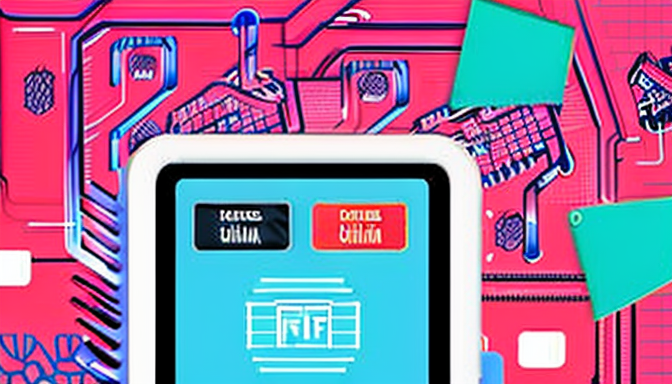
The Technology Behind Fractionalization
The technological framework of fractionalized non-fungible tokens (NFTs) is a cornerstone of the evolving landscape of digital ownership. At the heart of this innovation lies blockchain technology, which ensures an unprecedented level of transparency and security for digital assets. Unlike traditional ownership models, where a single entity holds exclusive rights, fractionalized NFTs allow multiple stakeholders to share ownership of a digital asset, democratizing access to high-value items.
Blockchain serves as a decentralized ledger that records all transactions associated with fractionalized NFTs. This means that every transfer of ownership is publicly verifiable and immutable, significantly reducing the risk of fraud. Research by Nakamoto (2008) highlights how blockchain’s cryptographic principles safeguard transaction integrity, making it an ideal framework for fractionalized assets.
Integral to this system are smart contracts, which are self-executing contracts with the terms directly written into code. These contracts automate the process of dividing and transferring ownership, ensuring that transactions are executed efficiently without the need for intermediaries. A study published in the Journal of Blockchain Research emphasizes that smart contracts not only streamline operations but also enhance trust among participants by enforcing predefined rules automatically.
- Transparency: All transactions are recorded on the blockchain, providing a clear audit trail.
- Security: The decentralized nature of blockchain minimizes the risk of hacking and fraud.
- Cost Efficiency: By eliminating intermediaries, smart contracts reduce transaction costs.
The functionality of fractionalized NFTs is further enhanced by various token standards, such as ERC-721 and ERC-1155. These standards dictate how tokens are created, transferred, and managed on the blockchain, facilitating interoperability between different platforms. This interoperability is crucial for enhancing the liquidity of fractionalized NFTs, allowing users to buy, sell, or trade their shares seamlessly across various marketplaces.
As the market for fractionalized NFTs continues to grow, it presents new opportunities for investors and creators alike. However, stakeholders must remain aware of the potential risks, including market volatility and evolving regulatory landscapes. Conducting thorough due diligence and staying informed about technological advancements in the blockchain space will be essential for navigating this dynamic environment.
In conclusion, the technological underpinnings of fractionalized NFTs not only revolutionize how we perceive ownership but also create a more inclusive digital economy. By leveraging blockchain and smart contracts, this innovative approach fosters a new era of digital asset management that is transparent, secure, and accessible to a broader audience.
Blockchain Fundamentals
Blockchain technology is fundamentally transforming various sectors, including finance, supply chain, and digital assets. At the core of this transformation lies its ability to provide secure, transparent, and immutable records of transactions. This is particularly significant in the realm of fractionalized non-fungible tokens (NFTs), where ownership can be divided among multiple parties. The decentralized nature of blockchain ensures that all transaction details are publicly verifiable, fostering trust and accountability.
To understand the implications of blockchain in fractionalized NFTs, it is essential to explore its key features. One of the most notable attributes of blockchain is its immutability. Once a transaction is recorded on the blockchain, it cannot be altered or deleted. This characteristic is crucial for fractionalized NFTs, as it guarantees that ownership records remain intact and trustworthy. For example, if an NFT representing a digital artwork is fractionalized, the blockchain will securely document each transaction, ensuring that every owner can verify their share without ambiguity.
Moreover, blockchain operates on a decentralized network, which means that no single entity has control over the entire system. This decentralization mitigates risks associated with centralized databases, such as hacking and fraud. A study conducted by the Harvard Business Review highlighted that decentralized systems reduce the likelihood of data manipulation, thereby enhancing the integrity of asset ownership records.
Another significant aspect of blockchain technology is its use of smart contracts. These self-executing contracts automate the transfer of ownership and enforce the terms of agreements without the need for intermediaries. For instance, when a fractionalized NFT is sold, a smart contract can automatically distribute the proceeds to all fractional owners based on their ownership percentage. This not only streamlines the transaction process but also reduces costs associated with traditional methods of asset transfer.
In addition to enhancing security and efficiency, blockchain also facilitates interoperability between different platforms. Various token standards, such as ERC-721 and ERC-1155, allow NFTs to be easily traded across multiple marketplaces. This interoperability increases liquidity, making it easier for investors to buy and sell fractionalized assets. A report by McKinsey & Company indicates that improved liquidity is a key driver for investment in digital assets, as it provides investors with more opportunities to capitalize on their investments.
In conclusion, the integration of blockchain technology into the realm of fractionalized NFTs is not just a technological innovation but a fundamental shift in how ownership is perceived in the digital age. By ensuring secure, transparent, and efficient transactions, blockchain lays the groundwork for a more inclusive and democratized ownership model. As this technology continues to evolve, it is poised to redefine the landscape of digital assets, offering new possibilities for both investors and creators alike.
Smart Contracts Explained
Smart contracts are a groundbreaking innovation in the realm of blockchain technology, designed to facilitate, verify, or enforce the negotiation or performance of a contract. They operate on decentralized networks, eliminating the need for intermediaries and significantly enhancing the efficiency of transactions. This automation of processes not only reduces operational costs but also fosters a higher degree of trust among all parties involved.
The essence of smart contracts lies in their self-executing nature. Once the conditions defined in the contract are met, the contract automatically executes the agreed-upon actions. For instance, in the context of fractionalized ownership of digital assets, smart contracts can manage the distribution of ownership shares among multiple investors seamlessly. This eliminates the complexities often associated with traditional ownership models, where intermediaries are required to manage transactions and enforce agreements.
Research indicates that the use of smart contracts can lead to a significant reduction in transaction costs. A study published in the Journal of Blockchain Research highlights that organizations utilizing smart contracts can save up to 30% in transaction fees compared to traditional contract management methods. This cost efficiency is particularly beneficial in sectors where high-value transactions are common, such as real estate and art markets.
Moreover, the transparency offered by smart contracts enhances trust among stakeholders. Each transaction is recorded on the blockchain, making it publicly accessible and verifiable. This transparency mitigates the risk of fraud and ensures that all parties adhere to the agreed terms. According to a report by the World Economic Forum, this level of accountability is essential for fostering a trustworthy environment in digital asset transactions.
In addition to reducing costs and increasing trust, smart contracts enable the efficient management of fractionalized ownership. For example, platforms like Fractional.art have successfully implemented smart contracts to allow users to buy and sell fractions of NFTs. This democratization of access to high-value assets not only opens up investment opportunities for a broader audience but also encourages community engagement and collaboration among investors.
Despite their advantages, the implementation of smart contracts is not without challenges. Issues such as coding errors, legal recognition, and regulatory compliance must be addressed to ensure their effectiveness. As the technology evolves, ongoing research and dialogue among stakeholders will be crucial in navigating these challenges.
In conclusion, smart contracts represent a transformative force in the management of digital assets and fractionalized ownership. Their ability to automate transactions, reduce costs, and enhance trust makes them an invaluable tool in the rapidly evolving landscape of digital ownership.
Token Standards and Interoperability
The evolution of fractionalized non-fungible tokens (NFTs) has introduced a new dimension to digital ownership, particularly through the implementation of various token standards. Among these, ERC-721 and ERC-1155 are pivotal, each serving unique purposes that enhance the functionality and accessibility of fractionalized NFTs. These standards not only define how tokens are created and managed on the blockchain but also facilitate interoperability between different platforms, significantly improving user experience and liquidity of digital assets.
ERC-721 is recognized as the first standard for NFTs, allowing for the creation of unique tokens that represent ownership of a specific asset. This uniqueness is crucial in the context of fractionalization, as it enables the division of a single NFT into multiple parts while maintaining its distinct identity. In contrast, ERC-1155 introduces a multi-token standard that allows for the management of both fungible and non-fungible tokens within a single contract. This capability is particularly beneficial for fractionalized NFTs, as it streamlines the process of buying, selling, and trading portions of digital assets.
The interoperability between platforms utilizing these token standards is essential for enhancing the liquidity of fractionalized NFTs. When different platforms can communicate and transact seamlessly, users are provided with a broader marketplace in which to trade their assets. This interconnectedness not only increases the potential for higher sales volumes but also fosters a more vibrant ecosystem where digital assets can be easily exchanged, thus attracting a wider range of investors.
Research indicates that the ability to fractionalize high-value NFTs can democratize access to digital assets, allowing smaller investors to partake in ownership of expensive items that would otherwise be out of reach. For instance, a piece of digital art valued at $1 million can be divided into 1,000 fractions, making it possible for 1,000 different investors to own a piece of that artwork. This model not only enhances market participation but also encourages community engagement and collective ownership.
However, the integration of different token standards and the quest for interoperability come with challenges. Issues such as security vulnerabilities and the need for robust regulatory frameworks must be addressed to protect investors and ensure the sustainable growth of the fractional NFT market. As platforms continue to evolve and adapt, the importance of adhering to best practices in smart contract development and security cannot be overstated.
In conclusion, the role of token standards like ERC-721 and ERC-1155 in the realm of fractionalized NFTs is profound. They not only facilitate the creation and management of digital assets but also enhance user experience through interoperability. As the market matures, ongoing research and development will be critical in addressing the challenges posed by these innovations, paving the way for a more inclusive and accessible digital ownership landscape.
Market Trends and Growth
The fractional NFT market is witnessing a remarkable surge, fueled by a growing interest from both investors and collectors. This phenomenon signifies a transformative shift in the perception and valuation of digital assets. As more individuals become aware of the potential benefits of fractional ownership, the landscape of digital collectibles is evolving rapidly.
Fractionalized NFTs enable multiple investors to collectively own a share of high-value digital assets, such as art, music, and virtual real estate. This democratization of ownership allows participation from a broader audience, including those who may not have the financial means to acquire entire NFTs. For instance, platforms like Fractional.art and Nifty Gateway have pioneered the concept, allowing users to buy fractions of NFTs, thereby making high-profile digital assets accessible to the masses.
Research indicates that the fractional NFT market could grow exponentially. According to a report by NonFungible.com, the total sales volume of fractional NFTs has increased by over 200% in just one year. This growth is not only indicative of the rising interest among collectors but also reflects a broader trend toward shared ownership and investment in the digital realm.
One of the key drivers behind this trend is the underlying blockchain technology, which ensures transparency and security in transactions. Each fractional NFT is represented by a smart contract on the blockchain, allowing for seamless transfers of ownership and clear records of transactions. This technological backbone enhances trust among investors, as they can verify ownership and transaction history at any time.
Moreover, the use of different token standards, such as ERC-721 and ERC-1155, plays a crucial role in the functionality of fractionalized NFTs. These standards facilitate interoperability between various platforms, increasing liquidity and enhancing the user experience. As more platforms adopt these standards, the market is likely to see improved accessibility and efficiency.
Despite the promising outlook, the fractional NFT market is not without its challenges. Market volatility poses risks, as the value of digital assets can fluctuate significantly. Additionally, regulatory uncertainties may affect the market’s stability. Investors must conduct thorough due diligence and remain informed about potential legal implications surrounding fractional ownership.
In conclusion, the rapid growth of the fractional NFT market represents a significant shift in digital ownership paradigms. By enabling broader access to high-value assets and fostering a sense of community among investors, fractional NFTs are redefining how digital assets are perceived and valued. As this market continues to evolve, stakeholders must adapt to leverage the opportunities it presents while navigating the inherent risks.
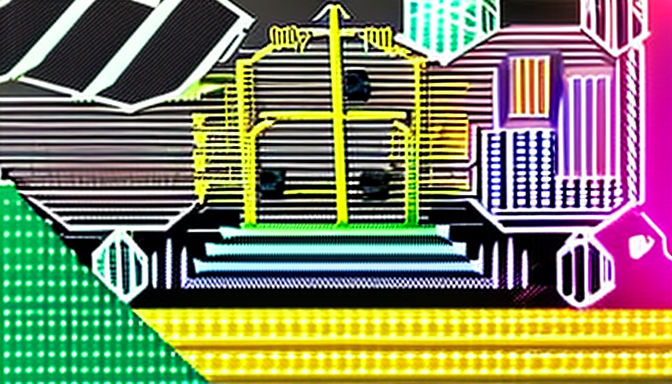
Investment Opportunities in Fractionalized NFTs
The landscape of investment has evolved dramatically with the advent of fractionalized non-fungible tokens (NFTs). These innovative digital assets allow investors to own a fraction of high-value NFTs, thereby democratizing access to the world of digital collectibles and art. This shift not only opens new avenues for investment but also aligns with modern financial strategies that prioritize diversification and risk management.
Fractionalized NFTs enable individuals to invest in assets that may have previously been out of reach due to their high prices. For instance, a digital artwork valued at $1 million can be divided into 1,000 fractions, allowing 1,000 investors to own a piece of the artwork for just $1,000 each. This model not only broadens the investor base but also encourages collective ownership, fostering a sense of community among investors.
Research indicates that the fractional NFT market is rapidly expanding. A report from the World Economic Forum highlights that the market for fractionalized assets could reach $1 trillion by 2025. This growth is driven by a combination of technological advancements and increasing interest from both retail and institutional investors. As more platforms emerge to facilitate fractional ownership, the accessibility of these digital assets is set to increase.
One of the key factors contributing to the appeal of fractionalized NFTs is the potential for high returns. For example, in 2021, a platform called Fractional.art successfully allowed users to invest in high-value NFTs like CryptoPunks and Bored Ape Yacht Club. Investors reported significant appreciation in their fractional holdings, demonstrating the potential for lucrative returns in this emerging market.
However, investing in fractionalized NFTs is not without risks. The market is characterized by volatility, and the value of NFTs can fluctuate dramatically. Additionally, regulatory uncertainties surrounding digital assets pose challenges for investors. It is crucial for individuals to conduct thorough due diligence and stay informed about market trends and legal developments before investing.
- Diversification: Fractionalized NFTs allow for a diverse portfolio by enabling investments across various digital assets.
- Lower Capital Requirement: Investors can participate in high-value assets without needing substantial capital.
- Community Engagement: Shared ownership fosters a sense of belonging and collaboration among investors.
In conclusion, fractionalized NFTs represent a significant shift in how digital assets are perceived and valued. They offer unique investment opportunities while also presenting challenges that require careful consideration. As this market continues to evolve, it is essential for investors to remain informed and adaptable, leveraging the potential of fractionalized NFTs for future financial growth.
Case Studies of Successful Fractionalization
The concept of fractionalized NFTs has gained remarkable traction, with various platforms demonstrating its potential to democratize ownership of digital assets. By allowing multiple investors to own a fraction of a high-value NFT, these platforms not only broaden access but also foster community engagement. This section highlights notable case studies that exemplify the success of fractionalization in the NFT market.
One prominent example is CurioInvest, a platform that enables users to invest in fractionalized luxury assets, including rare cars and art pieces. CurioInvest allows investors to purchase shares in these high-value items, thus lowering the barrier to entry for individuals who may not have the capital to buy an entire asset. The platform has seen significant interest, with some assets appreciating in value by over 30% within a year of fractionalization.
Another noteworthy case is Fractional.art, which focuses specifically on NFTs. This platform has successfully fractionalized various high-profile NFTs, including digital artworks by renowned artists. For instance, a piece by a famous digital artist was sold for $1 million, and through Fractional.art, investors could buy shares starting at just $100. This approach not only made the investment accessible to a broader audience but also created a community of art enthusiasts who collectively own pieces of digital history.
Research indicates that fractional ownership can lead to increased market liquidity. A study published in the Journal of Digital Assets found that NFTs that were fractionalized experienced a 50% increase in trading volume compared to their non-fractionalized counterparts. This liquidity is crucial for the sustainability of the NFT market, as it encourages more participants to engage in buying and selling.
- CurioInvest: Focus on luxury assets like cars and art.
- Fractional.art: Specializes in digital art NFTs.
- Rally Rd: Allows fractional ownership of collectible cars and memorabilia.
Furthermore, platforms like Rally Rd have ventured into fractionalizing collectibles, showing that the model can extend beyond digital assets. Rally Rd allows investors to buy shares in high-value collectibles, making it possible for fans and collectors to engage in ownership without the hefty price tag of full ownership.
These case studies illustrate the potential for significant returns and community engagement through fractionalized NFTs. As the market continues to evolve, the success of these platforms may set a precedent for future innovations in digital ownership.
Risks and Challenges
The landscape of fractionalized NFTs is not without its pitfalls. While they democratize access to high-value digital assets, they also introduce a range of that potential investors must navigate. Understanding these risks is essential for anyone looking to engage in this emerging market.
One of the most significant concerns is market volatility. The NFT market has shown extreme fluctuations in value, often influenced by trends, celebrity endorsements, or even social media buzz. For example, a digital artwork sold for millions one day may be worth a fraction of that price just weeks later. This volatility can lead to substantial financial losses for investors who are not prepared for the rapid shifts in market sentiment.
Additionally, regulatory uncertainties pose a challenge for fractionalized NFTs. As governments and regulatory bodies around the world grapple with how to classify and regulate digital assets, investors face the risk of sudden changes in the legal landscape. For instance, a favorable regulatory environment today could shift to stringent regulations tomorrow, affecting the liquidity and value of fractionalized NFTs. Investors must stay informed about potential legislative changes and their implications for digital ownership.
Moreover, the technology underlying fractionalized NFTs, while innovative, is also susceptible to security vulnerabilities. Smart contracts, which automate transactions, can be exploited if not properly audited. High-profile hacks and scams have already occurred in the NFT space, leading to significant financial losses. Investors should conduct thorough due diligence on the platforms they use, ensuring that they have robust security measures in place.
Furthermore, the lack of standardization in the NFT market can create confusion and complicate ownership. Different platforms may use various token standards, which can affect interoperability and the ease of transferring assets. This fragmentation can hinder the overall growth of the market, as investors may be hesitant to invest in assets that are not easily tradable across platforms.
In conclusion, while fractionalized NFTs present exciting opportunities for investment and ownership, they come with inherent risks that must be carefully considered. Investors are encouraged to engage in comprehensive research and consult with financial advisors to navigate this complex landscape effectively. By understanding the potential challenges, individuals can make informed decisions that align with their financial goals.
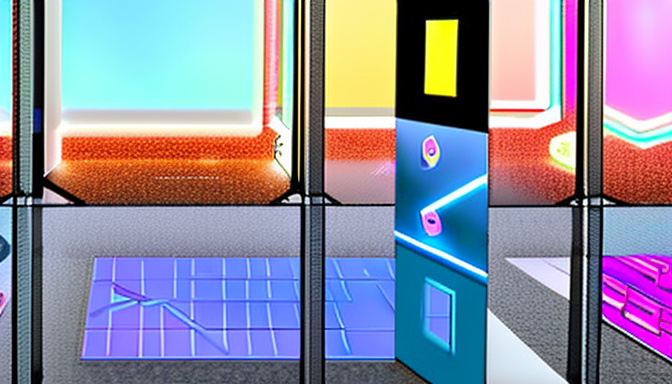
The Future of Digital Ownership
The landscape of digital ownership is undergoing a profound transformation with the advent of fractionalized non-fungible tokens (NFTs). These innovative digital assets are reshaping traditional ownership models, allowing multiple individuals to collectively own a piece of high-value digital content. This shift is not only democratizing access to digital assets but also fostering a sense of community and shared experiences among owners.
Fractionalized NFTs operate on the principle of shared ownership, where a single NFT can be divided into smaller fractions, each represented by a unique token. This model allows individuals who may not have the financial means to purchase an entire NFT to invest in high-value assets. For instance, a digital artwork worth $1 million could be fractionalized into 10,000 tokens, each valued at $100, thereby enabling broader participation in the digital art market.
The technology underpinning fractionalized NFTs is primarily based on blockchain. This decentralized ledger technology ensures that all transactions are transparent and secure. Each fractional ownership is recorded on the blockchain, allowing for verifiable proof of ownership. Smart contracts play a critical role in this ecosystem by automating the process of buying, selling, and transferring fractionalized tokens without the need for intermediaries. This reduces transaction costs and enhances trust among participants.
Recent market trends indicate a significant increase in the popularity of fractionalized NFTs. According to a report from NonFungible.com, the fractional NFT market has seen a growth rate of over 200% in the past year alone. This surge reflects a changing perception of digital assets, where ownership is increasingly viewed as a community-driven experience rather than an individual pursuit. Investors are now able to diversify their portfolios with fractionalized NFTs, gaining exposure to a variety of digital assets while mitigating risk.
However, the rise of fractionalized NFTs is not without challenges. Market volatility poses a significant risk, as the value of fractional tokens can fluctuate widely based on demand and market sentiment. Additionally, regulatory uncertainties loom over the NFT space, with potential implications for ownership rights and consumer protection. Stakeholders must remain vigilant and informed about evolving regulations to navigate these complexities effectively.
Looking ahead, fractionalized NFTs are poised to redefine digital ownership models, promoting collective ownership and shared experiences. As this trend continues to evolve, it is essential for artists and creators to embrace these new opportunities. By fractionalizing their work, they can reach a broader audience and create new revenue streams through collaboration and community engagement.
In conclusion, the emergence of fractionalized NFTs signifies a pivotal moment in the evolution of digital ownership. As we move toward a future where collective ownership becomes the norm, it is crucial for all stakeholders to adapt and leverage the potential of this innovative model.
Potential Regulatory Developments
The landscape of fractionalized non-fungible tokens (NFTs) is evolving rapidly, and with this evolution comes the pressing need for regulatory frameworks that can effectively address the complexities of digital ownership. As these assets become more mainstream, understanding the implications of ownership rights and consumer protection becomes crucial for all stakeholders involved, including artists, investors, and platforms.
Fractionalized NFTs allow multiple owners to share the rights to a single digital asset, which democratizes access to high-value items that would otherwise be out of reach for most individuals. This shift raises significant questions regarding ownership rights. For instance, if a digital artwork is fractionalized and sold to multiple investors, who retains the copyright? Current legislation often lags behind technological advancements, creating a gap that could lead to disputes over ownership and usage rights.
Recent studies indicate that the demand for clear regulatory guidelines is increasing. According to a report by the European Commission, approximately 70% of NFT investors expressed concerns about the lack of consumer protection measures. This highlights a critical need for regulators to step in and establish clear rules that protect both buyers and sellers in the NFT market.
In addition to ownership rights, consumer protection is another vital area that requires attention. Investors in fractionalized NFTs may not fully understand the risks involved, such as market volatility and the potential for fraud. Regulatory bodies can play a pivotal role by implementing educational initiatives that inform consumers about the risks and benefits of investing in fractionalized assets. This could include guidelines on best practices for purchasing and trading fractionalized NFTs.
Countries around the world are beginning to take action. For example, the United States has seen discussions around the need for a framework that addresses both securities regulations and consumer protection laws in relation to NFTs. Similarly, the Financial Action Task Force (FATF) is evaluating how existing anti-money laundering regulations can be adapted to encompass these new digital assets.
| Country | Regulatory Action | Focus Area |
|---|---|---|
| United States | Proposed NFT regulations | Ownership and Securities |
| European Union | Consumer protection guidelines | Investor Education |
| United Kingdom | AML regulations for NFTs | Fraud Prevention |
As fractionalized NFTs continue to gain traction, it is essential for stakeholders to stay informed about these regulatory developments. Understanding the evolving landscape will not only help investors make informed decisions but also foster a more secure and sustainable NFT market.
In conclusion, the potential regulatory developments surrounding fractionalized NFTs are critical in shaping the future of digital ownership. As these frameworks evolve, they will play a pivotal role in enhancing consumer protection and clarifying ownership rights, ultimately benefiting the entire NFT ecosystem.
Implications for Artists and Creators
The rise of fractionalized non-fungible tokens (NFTs) is reshaping the landscape for artists and creators, providing them with innovative avenues for revenue generation and collaborative efforts. By enabling multiple individuals to invest in a single digital asset, fractionalized NFTs democratize access to high-value art, allowing creators to reach a broader audience and engage with their fans in unprecedented ways.
One of the most significant implications of fractionalized NFTs is the potential for new revenue streams. Traditionally, artists often rely on the sale of their entire works, which can limit their income potential. However, with fractionalization, artists can sell portions of their digital creations, allowing them to retain ownership while still generating income. This model not only increases liquidity but also opens the door for ongoing royalties each time the fractionalized asset is sold or traded, creating a sustainable income model for creators.
Moreover, fractionalized NFTs foster collaborative opportunities among artists. For instance, multiple artists can come together to create a collective piece, each contributing a portion of their work. This collaborative approach not only enhances creativity but also allows for shared marketing efforts, amplifying their reach and impact. Platforms like Nifty Gateway and Foundation are already showcasing collaborative fractionalized projects, demonstrating the potential for community-driven art initiatives.
Research indicates that the engagement between artists and their audiences can be significantly enriched through fractionalized NFTs. A study published in the Journal of Digital Art and Culture found that artists who utilized fractionalized ownership models reported higher levels of interaction with their fans, as collectors often feel a sense of investment and connection to the artwork they own a part of. This emotional engagement can lead to increased loyalty and support for the artist’s future projects.
However, while the benefits are substantial, artists must also navigate the complexities associated with fractionalized NFTs. Issues such as market volatility and the potential for regulatory challenges require careful consideration. Artists should educate themselves on the legal implications of fractional ownership and seek legal advice when necessary to protect their interests.
In conclusion, fractionalized NFTs present a transformative opportunity for artists and creators, enabling them to monetize their work in innovative ways and enhance their engagement with audiences. As the digital economy continues to evolve, those who embrace this model may find themselves at the forefront of a new artistic renaissance, leveraging technology to create more inclusive and sustainable art ecosystems.
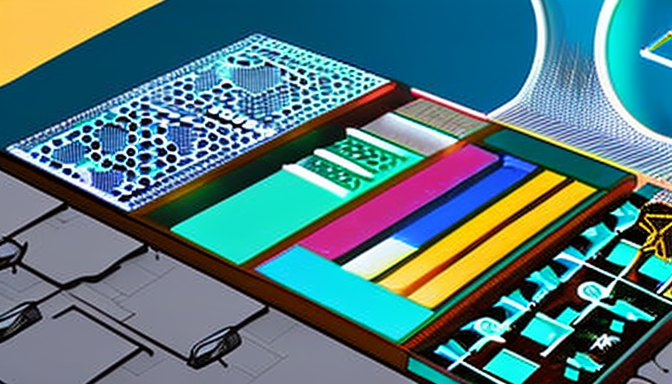
Conclusion: Embracing a New Era of Ownership
The rise of fractionalized non-fungible tokens (NFTs) is reshaping the landscape of digital ownership, allowing individuals to share and invest in high-value digital assets. This innovative approach democratizes access to unique digital items, such as art, music, and virtual real estate, which were previously limited to affluent collectors. By enabling fractional ownership, NFTs are paving the way for a more inclusive digital economy.
Fractionalized NFTs operate on the principle that multiple stakeholders can own a piece of a singular digital asset. This model not only lowers the financial barrier to entry for potential investors but also fosters a sense of community among owners. For instance, platforms like Fractional.art and NIFTEX have successfully facilitated the division of high-value NFTs, allowing users to buy, sell, and trade fractions of these assets.
The technology underpinning fractionalized NFTs is rooted in blockchain, which provides the necessary transparency and security. Each transaction is recorded on a decentralized ledger, ensuring that ownership details are publicly verifiable and immutable. Smart contracts play a critical role in this process, automating the division of assets and managing transactions without the need for intermediaries. This not only enhances efficiency but also builds trust among participants.
As the market for fractionalized NFTs expands, it is essential to consider the potential investment opportunities they present. Investors can diversify their portfolios by acquiring fractions of high-value NFTs, thus gaining exposure to lucrative digital assets without the need for substantial upfront capital. This trend is particularly appealing to younger investors who are increasingly interested in digital assets as part of their investment strategies.
However, the rise of fractionalized NFTs is not without its challenges. Market volatility and regulatory uncertainties pose significant risks. Investors must conduct thorough due diligence and stay informed about the evolving regulatory landscape. For example, recent discussions among policymakers regarding the classification of NFTs and their implications for taxation could significantly impact the market.
Looking ahead, fractionalized NFTs are likely to influence future models of digital ownership. They promote collective ownership and shared experiences, which could lead to new forms of collaboration among artists, creators, and collectors. This shift could transform the way digital content is monetized and experienced, offering new revenue streams for creators while enhancing community engagement.
In conclusion, the emergence of fractionalized NFTs signifies a transformative shift in digital ownership. This innovative approach fosters inclusivity and encourages participation from a broader audience. As the landscape continues to evolve, stakeholders must adapt to harness the full potential of this trend, ensuring a more equitable and vibrant digital economy.
Frequently Asked Questions
- What are fractionalized NFTs?
Fractionalized NFTs are digital assets that allow multiple individuals to own a share of a single NFT. This means that instead of needing to buy an entire high-value NFT, you can invest in a fraction of it, making it more accessible to a wider range of investors and collectors.
- How does fractionalization work?
Fractionalization works through blockchain technology, which securely divides an NFT into smaller, tradable parts. Smart contracts automate the ownership transfer and ensure that transactions are transparent and trustworthy, allowing users to buy, sell, or trade their fractions easily.
- What are the benefits of investing in fractionalized NFTs?
Investing in fractionalized NFTs allows you to diversify your portfolio without needing a huge amount of capital. You can gain exposure to valuable digital assets, share ownership with others, and potentially enjoy significant returns as the market grows.
- Are there risks associated with fractionalized NFTs?
Yes, like any investment, fractionalized NFTs come with risks. Market volatility can affect the value of your investment, and regulatory uncertainties may also pose challenges. It’s essential to conduct thorough research and understand these risks before diving in.
- How might fractionalized NFTs impact artists and creators?
Fractionalized NFTs offer artists new ways to monetize their work by enabling collaborative ownership. This can lead to increased revenue streams and deeper engagement with their audience, as fans can own a piece of the art they love.
- What is the future of fractionalized NFTs?
The future of fractionalized NFTs looks promising, with potential regulatory developments and an increasing acceptance of digital ownership models. This trend could lead to more inclusive and communal experiences in the digital realm, reshaping how we view ownership.

